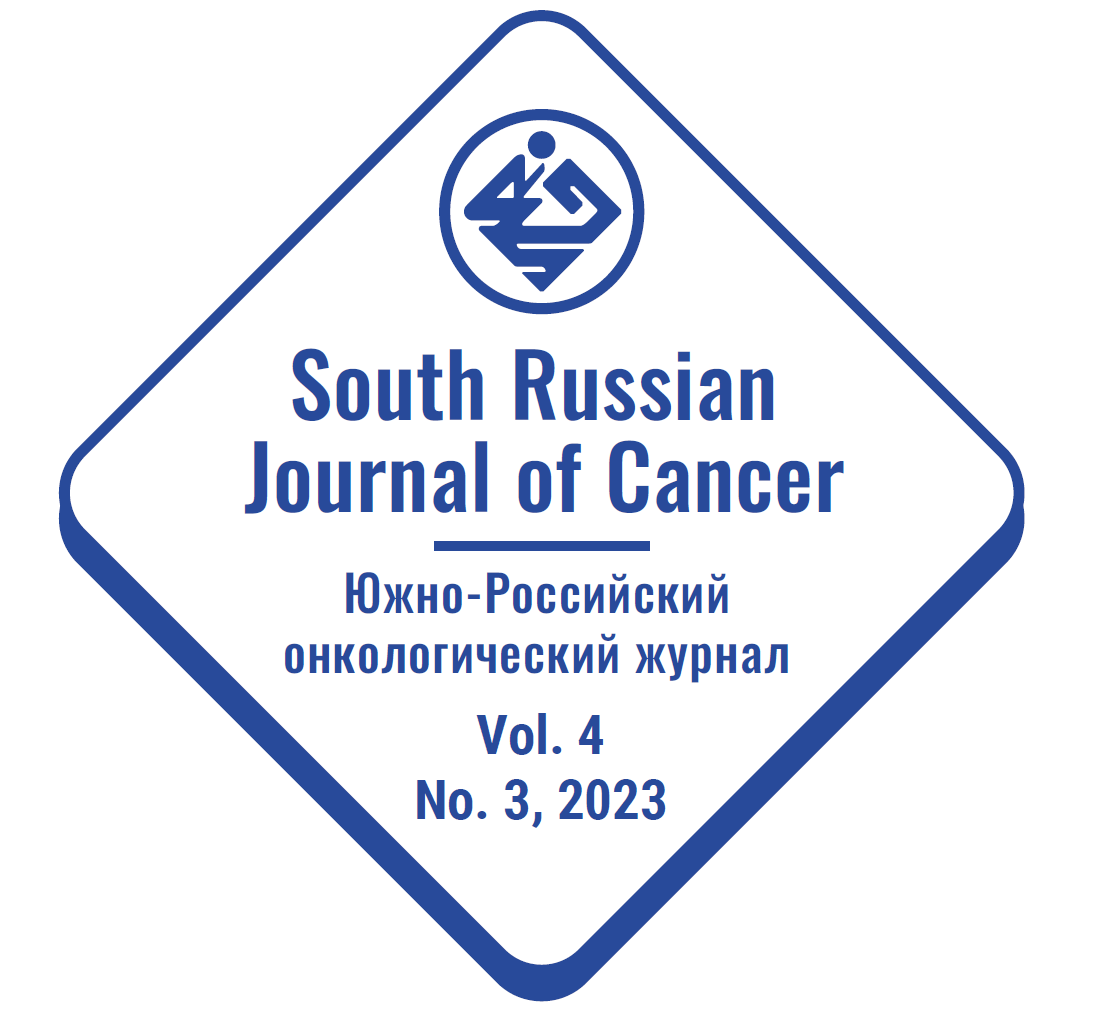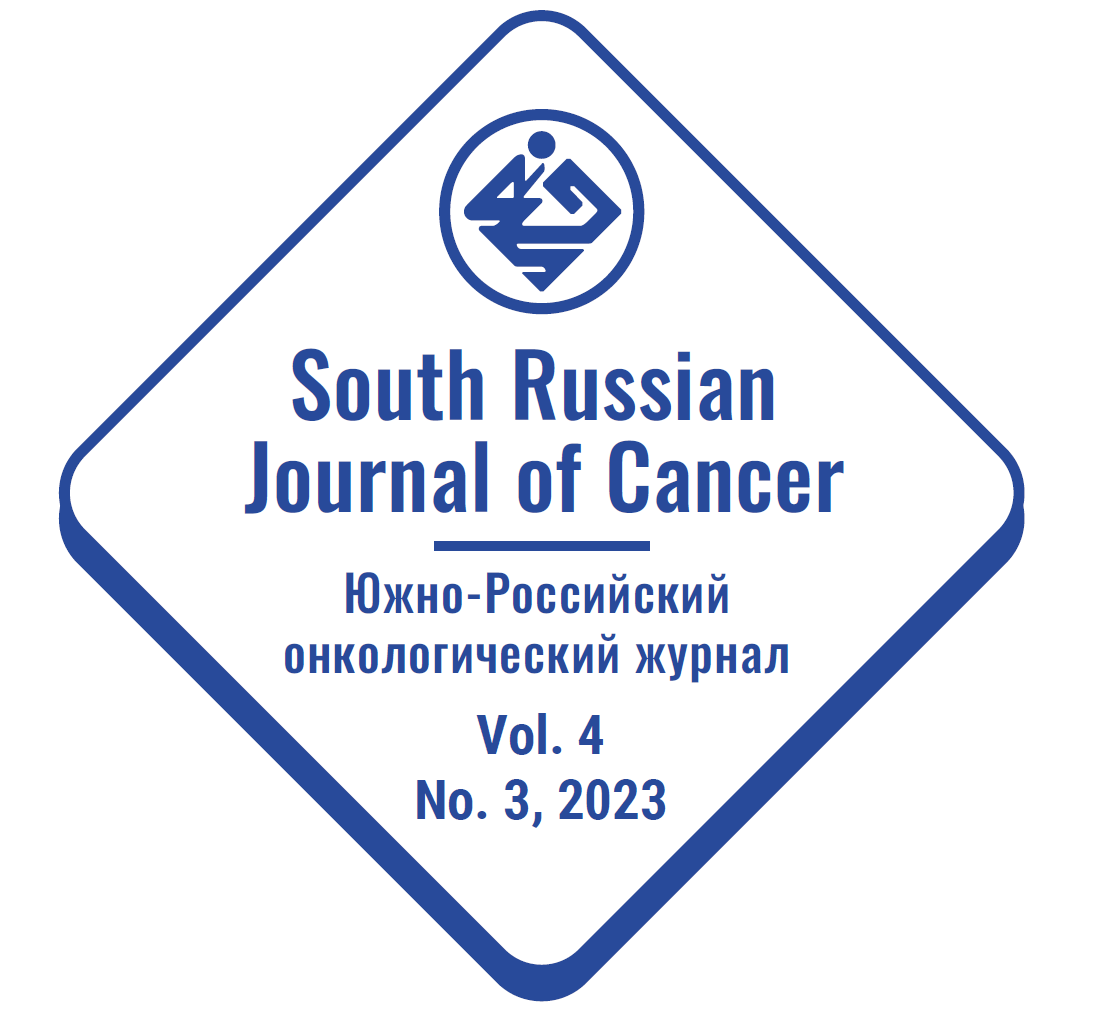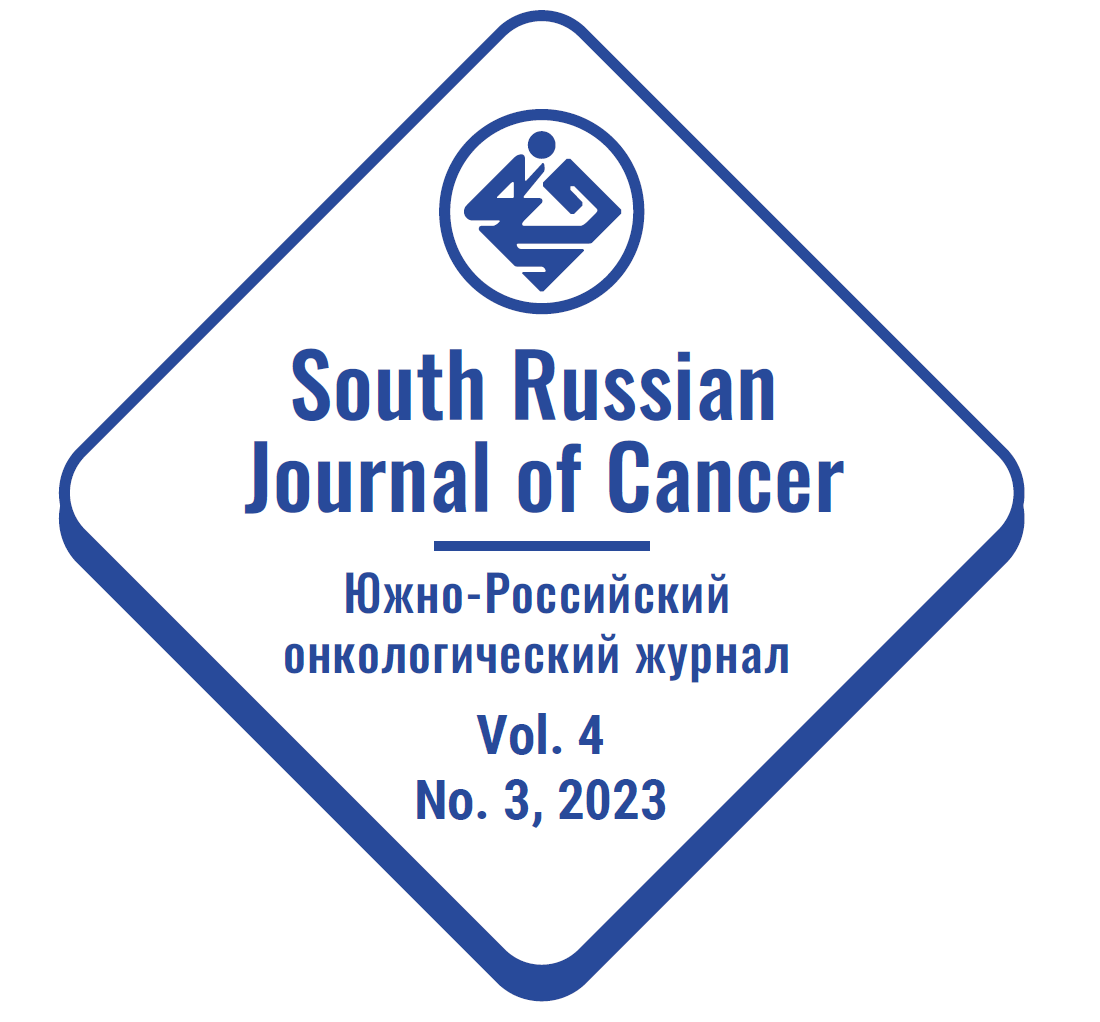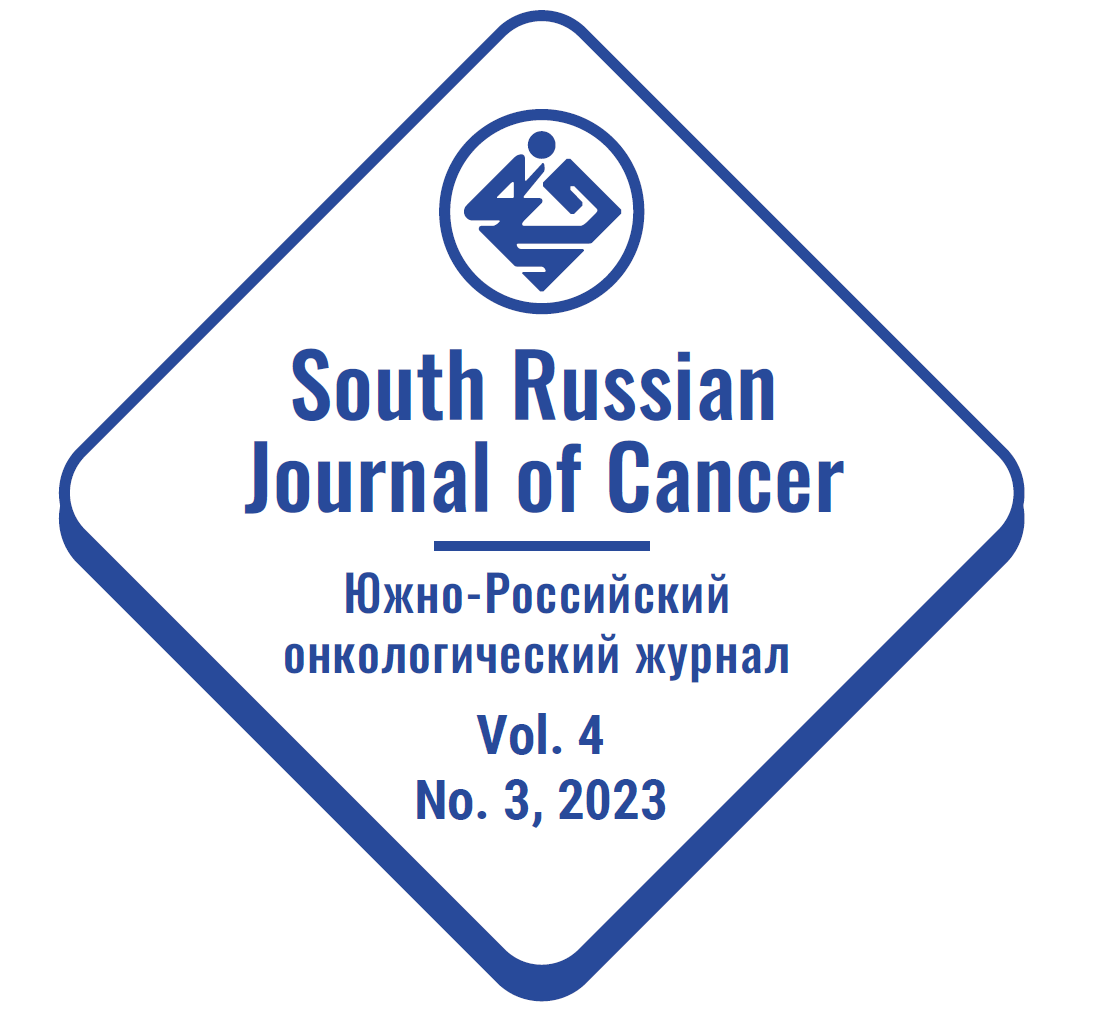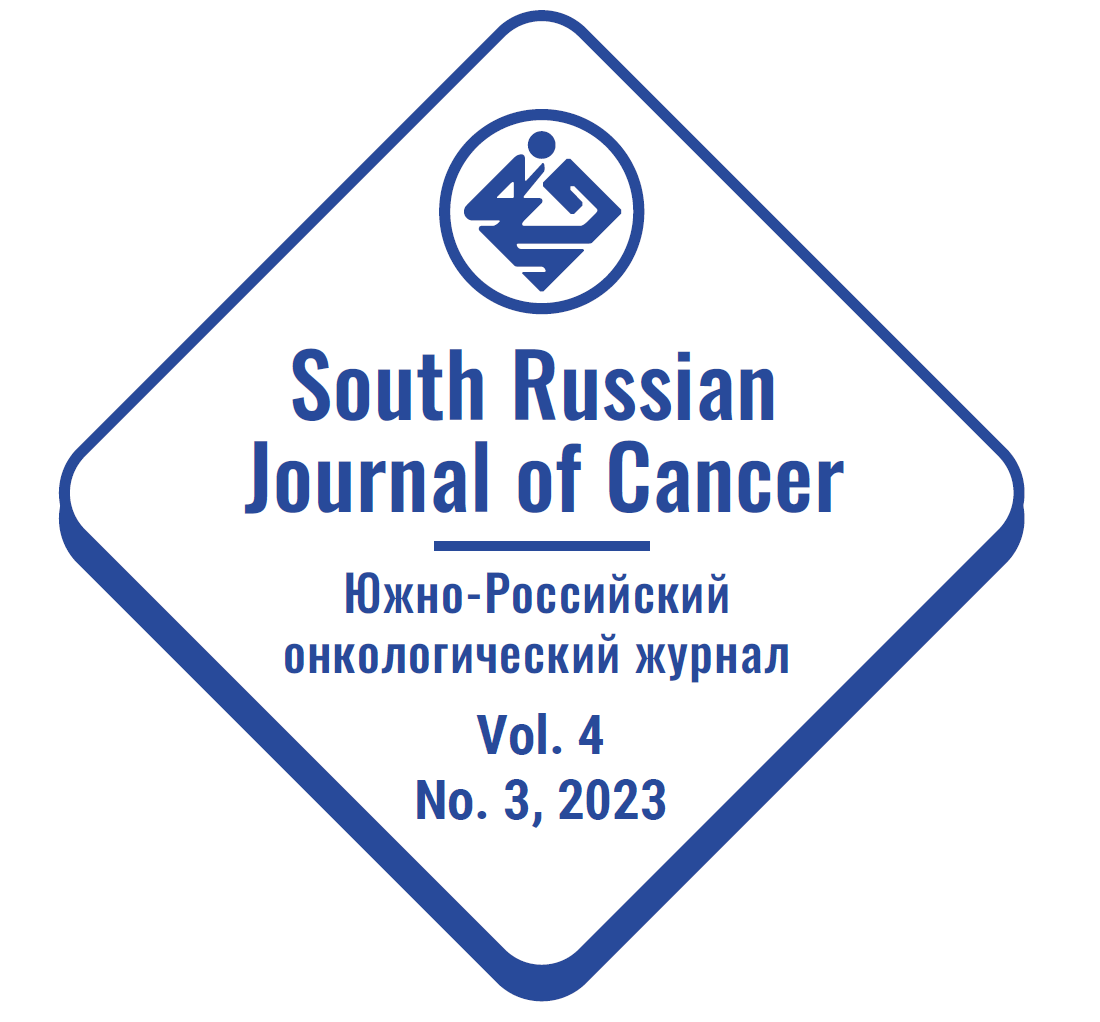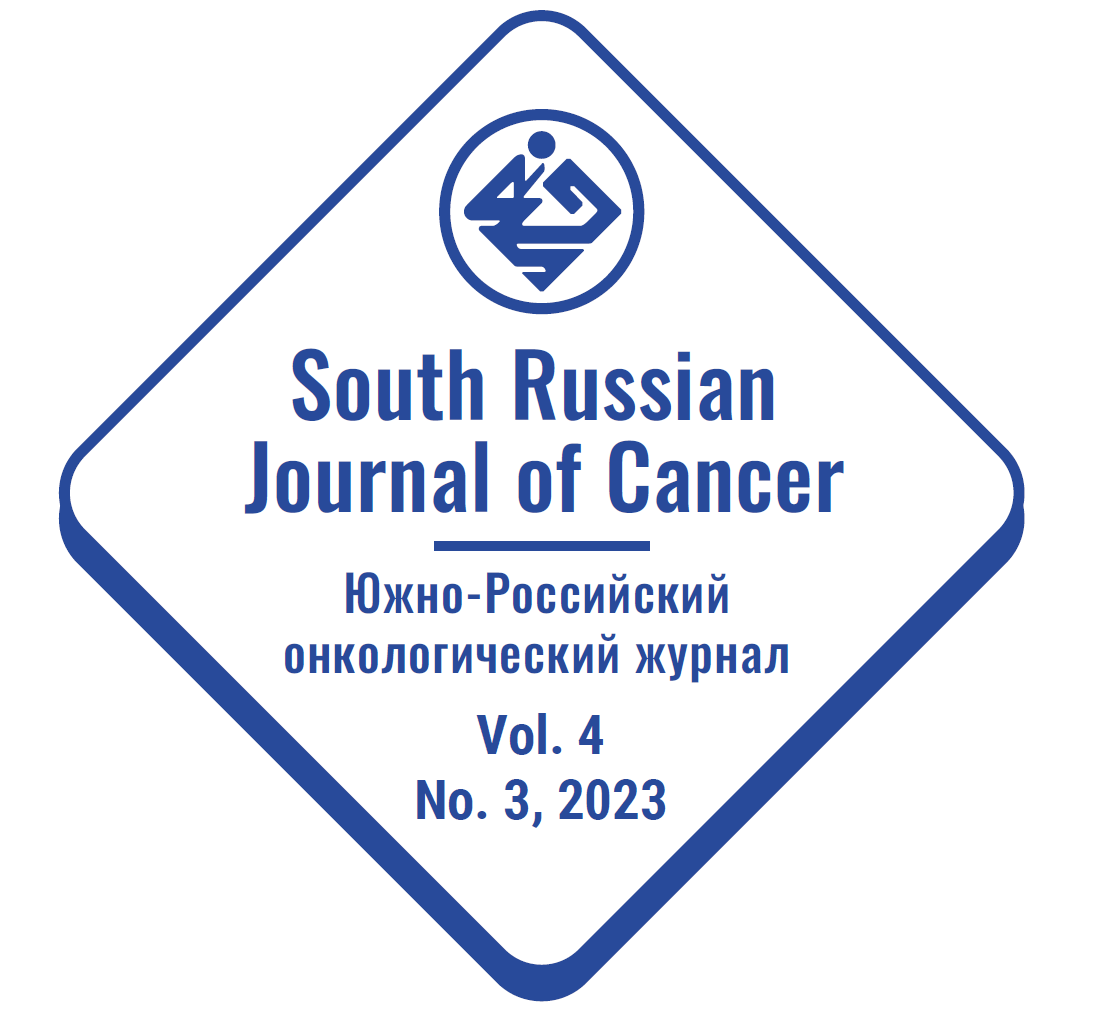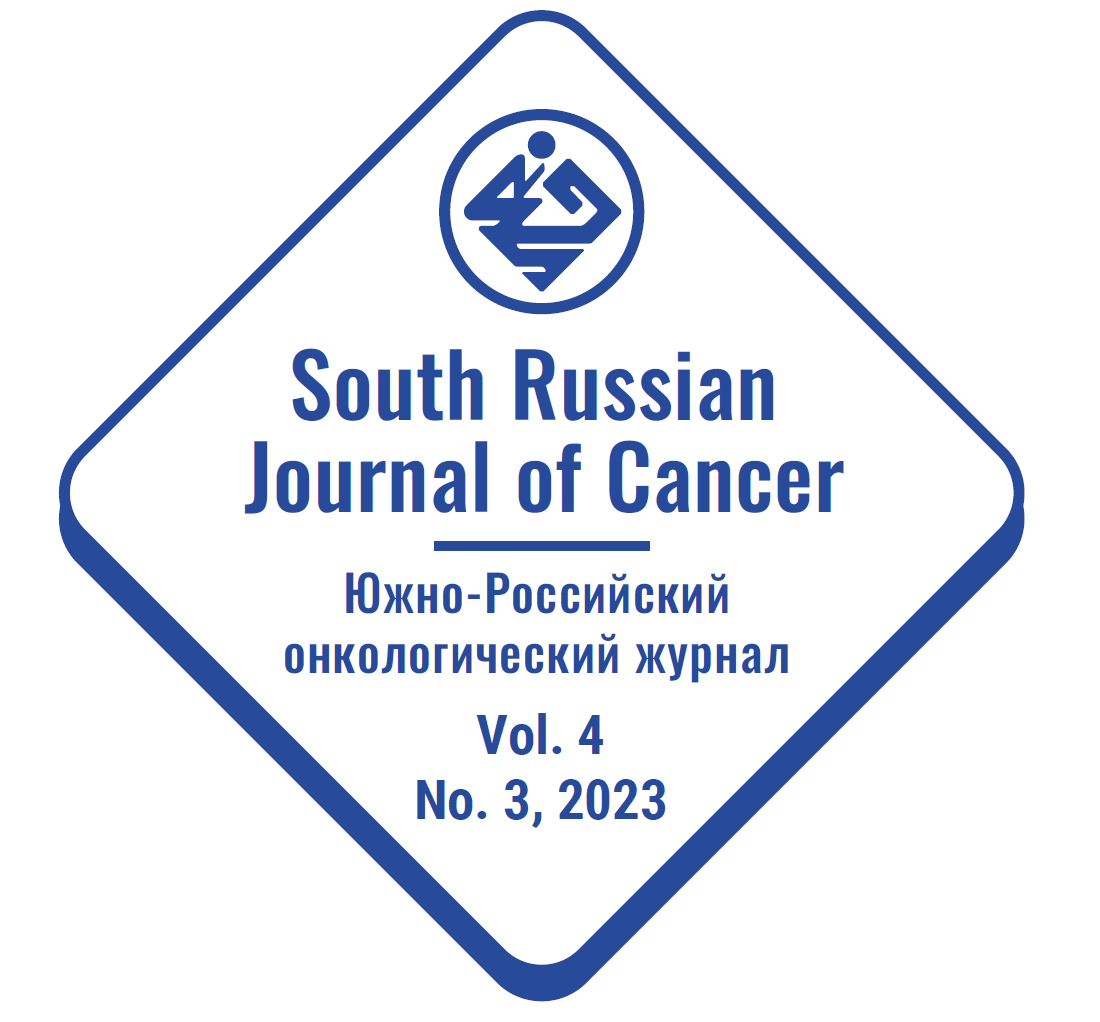ORIGINAL ARTICLES
Purpose of the study. Elaboration of a surgical technique to manage patients with metastatic lesions of the craniovertebral region.
Patients and methods. The study included 7 patients with metastatic lesions of the craniovertebral region, who’ve been operated on for severe instability, pain syndrome, neurological deficit in the period from 01/01/2014 to 09/30/2022. To assess the neurological status and patients’ condition the Frankel and Karnofsky scales were used on the day of admission and discharge of the patients from the hospital. Pain intensity was assessed using a visual analog pain scale (VAS). To assess instability in the affected spinal motion segment the SINS scale was used. All patients underwent palliative surgical treatment in the amount of occipitospondylodesis with a biopsy of the neoplasm from the posterior approach.
Results. The average age of patients was 60 [44; 66] years. All patients had a marked pain syndrome prior to the surgery. The average pain intensity according to the visual analog pain scale was 8 points. In the preoperative period, 6 (85 %) patients on the Frankel scale were assigned to group E, 1 (14 %) – to group C. In 6 (85 %) patients there was no dynamics in the neurological status following the surgery, however according to the Karnofsky scale there was an improvement up to 10 points due to the regression of the pain syndrome down to 1 point on the visual analog scale. Hemiparesis developed in 1 (14 %) patient due to malposition of the laminar hook in the postoperative period. The average duration of surgical interventions made up 337.5 [315; 345] min, the average intraoperative blood loss made up 300 [300; 800] ml. In 6 out of 7 patients (85 %) there was no neurological status dynamics after the surgery, and according to the Karnofsky scale an improvement up to 10 points was noted due to regression of the pain syndrome to an average value of 1 [1; 2] VAS score.
Conclusion. The obtained results indicate the clinical application possibilities of minimally traumatic surgical technologies for the treatment of craniovertebral zone metastatic tumors.
Purpose of the study. To study the histological type, grade of tumor differentiation in patients with primary and recurrent clinically non-muscle-invasive bladder cancer (NMIBC) with highly carcinogenic human papillomavirus (HPV) infection.
Patients and methods. Formalin-fixed and paraffin-embedded bladder tumor tissue samples have been studied in 159 patients who underwent transurethral resection (TUR) of the bladder, for the presence of HPV DNA. To detect, quantify and differentiate DNA of HPV 16, 18, 31, 33, 35, 39, 45, 51, 52, 56, 58, 59, 66, 68 genotypes in the samples, the AmpliSense® HPV HRC genotype-titer-FL was used. The result of the study was taken into account when the amount of DNA of the β-globin gene was at least 1000 copies per reaction. In order to statistically analyze our data we used the Fisher exact test and also calculated the odds ratio (OR) and 95 % CI.
Results. According to the results of the study, out of 159 patients, high-risk HPV DNA was detected in the tumor tissue in 59 (37.1 %), of which HPV type 16 was found in 52 patients (89.4 %), HPV 18 was detected in 4 patients type (6.7 %) and type 35 in 3 (5.08 %). In a morphological study of the tissues of HPV-positive patients, the grade of tumor differentiation was G2 in 18 cases (30.5 %), G3 in 37 blocks, and G1 was detected only in 4 cases (6.7 %). In the presence of HPV, the chance of detecting a stage G3 tumor increases by 4.3 times. According to the received data, we can assume that there is a close relationship between detection in HPV patients of high-risk genotypes with moderately differentiated and low-differentiated forms of bladder cancer.
Conclusion. this study may indicate that HPV infection affects the grade of tumor differentiation, and this, in turn, may allow the use of the HPV test to assess the nature of the development of relapse and/or progression of the disease.
Purpose of the study. Identification of potential miRNA markers in material of focal pancreatic lesions.
Materials and methods. Samples of focal pancreatic lesions after histological evaluation were enrolled in the study including chronic pancreatitis (ChP) (n = 23), low-grade pancreatic intraepithelial neoplasia /PanIN‑1/2 (n = 19), high-grade pancreatic intraepithelial neoplasia /PanIN‑3 (n = 8), and invasive pancreatic ductal adenocarcinoma PDAC (n = 26). Workflow of research included the profiling of cancer-associated miRNA in pooled samples, the selection of potential marker miRNAs, the assessment of selected miRNAs expression in total collection of specimens, the identification of differentially expressed miRNAs, and the approbation of new algorithm of data interpretation via ratio of “reciprocal miRNA pair”. Consequent reactions of revers transcription and quantitative teal-time PCR were used.
Results. The expression levels of miR‑216a and miR‑217 were decreased in the following order: PanIN‑1/2 > PanIN‑3 > PDAC. Moreover, miR‑375 was up-regulated while miR‑143 was down-regulated in the PDAC. Differential diagnostics of PDAC versus focal chronic pancreatitis might be performed with high accuracy (AUC > 0.95) by assessment panel of four molecules: miR‑216a, miR‑217, miR‑1246 and Let‑7a.
Conclusion. The assessment of microRNAs in pancreatic lesions is a promising approach for the differential diagnosis of PDAC, but this technology requires further validation with an increase in the number of samples.
Purpose of the study. Creation of a transplantable orthotopic PDX model of gastric cancer in Balb/c Nude immunodeficient mice using implantation and injection.
Materials and methods. Two methods, that are injection and implantation, were used to create an orthotopic PDX model of human gastric cancer. The first method involved injections of a suspension of a mechanically disaggregated patient's tumor after filtration into the gastric wall of Balb/c Nude mice. For the second method, small fragments (3 × 3 × 3 mm) of patients' tumors were implanted in the gastric wall of mice along the greater curvature with a dissection of the serous muscular layer.
Results. Control laparotomy in Balb/c Nude immunodeficient mice showed a successful engraftment of the tumor material at the 1st and 3rd procedures when using the implantation method for the creation of a PDX model of gastric cancer. The injection method was ineffective, and no models were created. The histological type of the obtained PDX models was compared to the type of the donor tumor by histological examination (hematoxylin and eosin staining). The tumor grade remained stable and did not change during xenograft passage, which showed that the obtained model was identical to the histotype of the donor tumor.
Conclusion. The presented implantation method for the model creation results in effective tumor engraftment. The developed model can be used to test the effectiveness of anticancer or antimetastatic drugs, for studying the functions of biomarkers, or in assessing the microenvironment of a gastric cancer.
CLINICAL CASE REPORTS
Today, an Arnold-Chiari malformation is defined as a developmental pathology of the craniovertebral junction manifested by a discrepancy between the volume and contents of the posterior cranial fossa, which in turn leads to compression of neurological structures and changes in the cerebrospinal fluid circulation. There are several theories of the correlation between Chiari malformation and syringomyelia, but the exact mechanism of syringomyelia development remains unclear.
This article describes a clinical case of treatment of a child with Chiari I malformation and syringomyelia within the cervical and thoracic segments of the spinal cord; after complete posterior fossa decompression, syringomyelia progressed in the early postoperative period with the development of a severe neurological deficiency. Since there is no standard treatment of such postoperative complications, a decision was made on the expectant management of the patient. From the twentieth day of the postoperative period, the patient showed complete regression of the neurological deficiency and positive MRI dynamics of syringomyelia.
The presented clinical case raises such issues as not only the pathophysiology of syringomyelia progression after complete posterior fossa decompression, but also the determination of patient management tactics in case of a complicated postoperative course of the disease.
The presented clinical case is of interest due to the rarely described aggravation of syringomyelia with enhancing neurological symptoms in the early postoperative period after complete posterior fossa decompression. Our observation suggests that the expectant management of the patient, despite syringomyelia progression with neurological deficiency aggravation after posterior fossa decompression, allowed a favorable long-term outcome of Chiari I malformation.
Recently, there has been an increase in the number of patients with primary multiple malignant tumors, which not only affect one or more organs, but also differ in their histological structure. At the same time, melanoma of the skin is a rare localization among primary malignant neoplasms. This nosology accounts for only 3–5 % of all skin tumors. Melanoma is associated with high mortality due to the development of a pronounced metastatic potential, and therefore the study of this malignant formation is of the greatest relevance. Over the past 50 years, the incidence of multiple primary melanoma has increased significantly. At the same time, the number of patients with more than 2 lesions has increased to 18 % of the number of primary multiple melanomas over the past 50 years. This emphasizes the importance of monitoring patients with melanoma and regularly examining patients for new lesions. This article demonstrates a clinical case of a patient with a confirmed diagnosis of a primary multiple disease with melanoma of the skin and rectum. For skin melanoma, the patient underwent a wide excision of the tumor with inguinal-femoral lymph node dissection on the right. Subsequently, radiation therapy and chemotherapy were performed. Further, during a comprehensive examination, the patient was diagnosed with a malignant neoplasm of the lower ampullar rectum with a transition to the anal canal. The patient underwent laparoscopic-assisted abdominoperineal extirpation of the rectum. Histological analysis revealed nodular melanoma. From the anamnesis of the patient, among the comorbidities, breast cancer, uterine myoma, hemangioma of the liver and lung hamartoma were also identified. The clinical course of all malignant tumors was favorable, without the development of relapses and metastases. The greatest interest in this situation is the primary multiple melanoma in connection with successful treatment with the most unfavorable prognosis. The described clinical observation indicates the need for an in-depth study of cases of primary multiple malignant tumors and the search for mechanisms for a favorable course of malignant neoplasms in this case.
REVIEW
Thymomas and carcinomas of the thymus gland, also known as epithelial tumors of the thymus (TT) are rare malignant neoplasms, but are the most common solid tumors of the anterior mediastinum. The incidence does not exceed 1.3–1.7 per million inhabitants per year. In Europe, about 1,500 new cases are registered annually, and the average age of patients is around 40–50 years.
Originating from the epithelial component of the thymus, the primary lymphoid organ, they are accompanied by a high risk of developing autoimmune disorders due to their unique biology. Indeed, up to 30 % of TETS patients suffer from autoimmune disorders (AID), the most common of which is myasthenia gravis (MG). AID are detected not only during the diagnosis of a tumor, but also during follow-up. With rare exceptions, there are no specific targets for targeted therapy in TETS. Immune checkpoint inhibitors (ICIs) halt the ability of tumor cells to evade immune surveillance, enhancing their killing. Unprecedented achievements of immunotherapy (IT) in the treatment of metastatic non-small cell lung cancer (NSCLC) and melanoma have made it reasonable to study the effectiveness of prescribing ICI in patients with TETs. The prevalence of AIR in different morphological subtypes of TETs may influence the decision to conduct IT due to the increased risk of toxicity. The review summarizes current data on the effectiveness of IT in thymoma and thymus cancer (TC) and discusses several unresolved problems associated with the use of ICI in TETs.
The purpose of this review is to present up-to-date data on the issue under discussion and possible prognostic biomarkers for IT, and to highlight the problems associated with autoimmune disorders (AID). In our opinion, a deep understanding of the molecular genetic and immune landscape of thymus epithelial tumors and the interaction of ICI with the immune system is the key to improving the effectiveness and preventing the side effects of autoimmune IT. A comprehensive solution to existing problems will undoubtedly open up new possibilities for the drug treatment of this rare and difficult disease.



